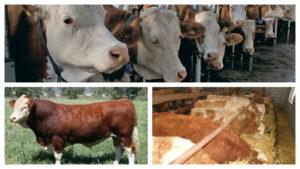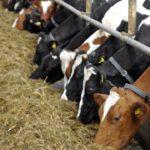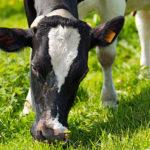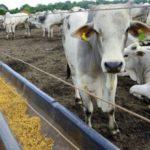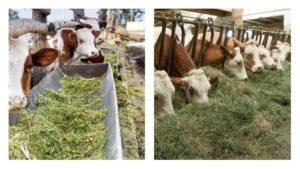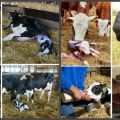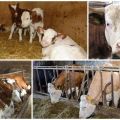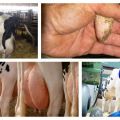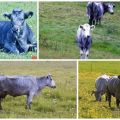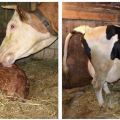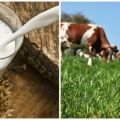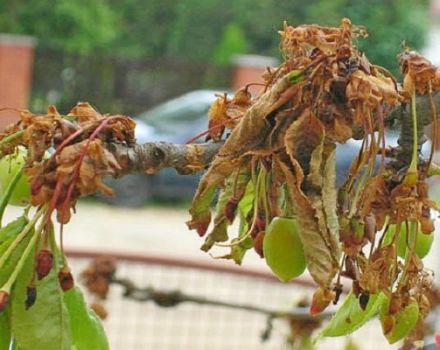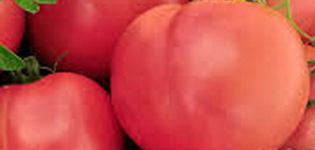How to properly feed a cow at home before and after calving
If you know how to feed a cow before and after calving, as well as how to adjust her daily diet, you can not only improve the quality and quantity of meat and milk received, but also help the animal recover from a difficult birth process and avoid some postpartum complications. The health status of the expected offspring also directly depends on a correctly composed diet.
How to feed a cow before and after calving at home
In order for the stress of the birth process to affect the body of the animal to a minimum, the breeder already 3 weeks before calving needs to know how to feed the cow and what changes need to be made to her daily diet.
Feeding before calving
The diet should be changed as follows 21 days before calving:
- 2-3 weeks before the expected date of birth, the cow is fed basic and concentrated feed in the amount of 1 kilogram, 3 times a day.
- 1-2 weeks before calving, the amount of concentrate increases to 4 kilograms per day. Feeding scheme: in the morning and in the evening they give 1 kilogram of feed, at lunchtime - 2 kilograms.
- A week before giving birth, the concentrate is given 2 kilograms in the morning, at lunchtime and in the evening.
Before calving, the animal may experience a loss of appetite and refuse food. Since childbirth is a strong stress for the body, a cow's lack of interest in food during this period is considered normal. The remaining food can be left in the feeder so that when hunger appears, the animal can eat.
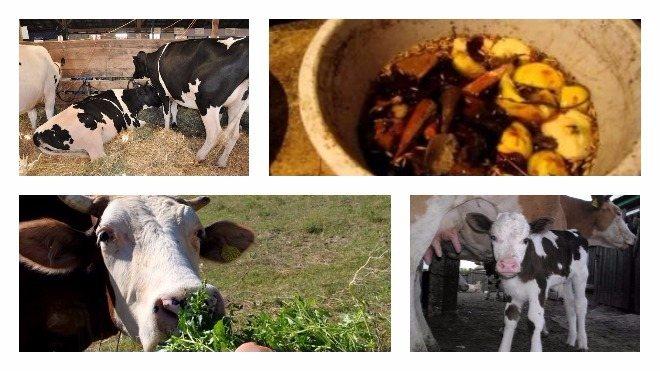
A few days before calving, it is recommended to feed the cow the diet presented in the table:
| Feed type | % |
| Silage and hay from cereals | 60 |
| Concentrates | 24 |
| Roughage | 16 |
Meals after calving
Half an hour after the end of the birth process, the cow must be given a large amount of water to eliminate the risk of dehydration. On the day of calving, it is allowed to feed the animal only with hay and fresh grass. From the second day after giving birth, you can give a concentrated feed, bran with water, which can be replaced the next day with oats. Such food will not irritate the stomach and will help to normalize the stool.
Vegetables and root vegetables are given a little at first, after which they gradually increase the serving size. Succulent food in large quantities immediately after childbirth causes indigestion and water imbalance in the body, which causes udder swelling.
What shouldn't be given?
In order for the cow not to get sick and give a lot of high-quality milk, it is necessary to adhere to certain rules when drawing up a diet:
- The animal should be fed exclusively with high-quality hay without signs of spoilage.
- With the daily presence of bread on the menu, the bard contained in it can negatively affect the health of the cow, therefore bread should only be given occasionally, in the form of a delicacy, but not the main meal.
- Silage, due to the high concentration of organic acids in it, is contraindicated to be used as the main feed. Neglect of this rule threatens diseases of the digestive system.
- To prevent milk from acquiring an unpleasant odor, all plants with a strong aroma and taste should be excluded from the diet.
- Vegetables and fruits must be seed and pitted before being fed to a cow to protect the animal from an eating disorder.
- The simultaneous intake of beets and potatoes provokes intestinal discomfort and flatulence.
- Green potatoes and unripe tomatoes can cause poisoning due to the solanine they contain.

Features of feeding in winter
Due to the lack of fresh plant food in winter, the animal's diet changes significantly. The task of the livestock breeder in the winter period is to try to compensate the cow for the lack of greenery to the maximum.
The main winter feed for a cow is hay, which requires 15-20 kilograms per head per day. Other foods that should be included in the daily diet in the amount of 5-10 kilograms per head are chopped and peeled vegetables and root vegetables. You can fill the lack of green grass with 10-15 kilograms of silage or haylage. Concentrated, combined feed and mash made from barley, oats and wheat have good energy value.
